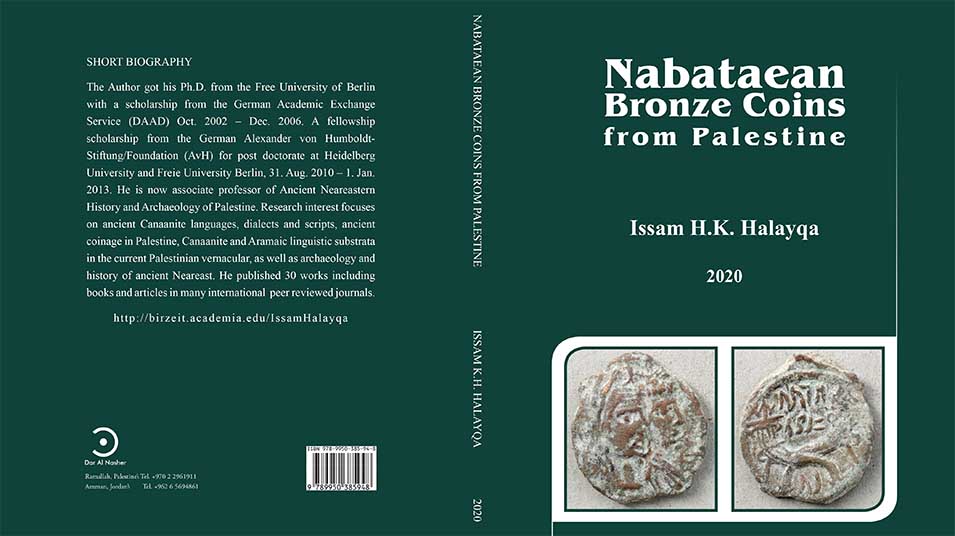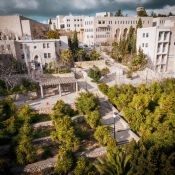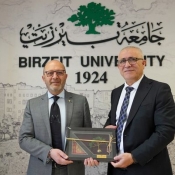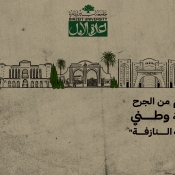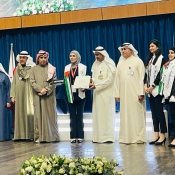New book on Nabatean Palestine’s bronze coins by history professor Issam Halayqa
Issam Halayqa, a faculty member of Birzeit University’s Department of History and Archaeology, released a new book titled “Nabatean Bronze Coins from Palestine.”
The 208-page book presents an analytical study of a collection of Nabatean coinage that includes 161 bronze species that were found in areas around Hebron and Bethlehem and date back to the rule of the Nabateans kings Aretas IV, Malichus II, and Rabbel II (9 BC–106 AD).
Halayqa’s study analyzes the script and decorative patterns on the coins in order to place them into a timeframe, as they were not found in a clear archeological context. The analysis demonstrates that the coins are engraved with Nabataean texts and contain elements that are inspired by the Nabataean culture: The coins show the image of the king, to the left of which appears the portrait of the queen; both are crowned with wreaths of laurel and a double cornucopia (a symbol of abundance and nourishment). Three lines of Nabataean text are displayed on the reverse sides of all coins.
The findings of this research are significant because these coins provide important information regarding the chronology of the Nabatean kings, as they bear the names of the royal family and other prominent figures of the Nabataean era.
Halayqa obtained a doctorate from Free University of Berlin in 2006 with a scholarship granted by the German Academic Exchange Service (DAAD). He is furthermore the recipient of a fellowship from the German Alexander von Humboldt Stiftung/Foundation (AvH) that enabled him to carry out post-doctoral studies at Heidelberg University and Free University of Berlin. Currently, he is an associate professor of the ancient near-eastern history and archeology of Palestine. His research interests focus on dialects and scripts; ancient Canaanite languages, with Canaanite and Aramaic linguistic substrata in particular; and ancient coinage in Palestine; among others.

